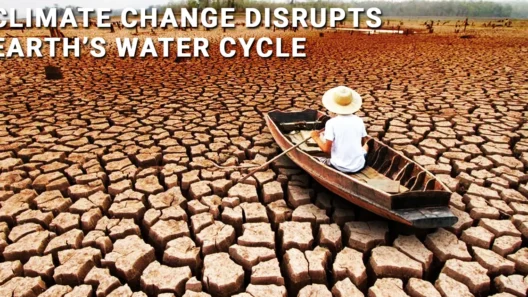California, with its sprawling coastline and diverse geography, is a state characterized by a remarkable climate that encompasses various microclimates. The interplay between sun, surf, and seasonal shifts shapes not only the natural ecosystems but also the lifestyle and culture of the residents. What if you could experience all of California’s climate nuances in a single day? This question raises a captivating challenge: How can one truly appreciate the cornucopia of climates present in this vibrant state?
The climate of California is predominantly Mediterranean, a term that might conjure images of sun-drenched beaches and balmy evenings. This climate type is defined by dry summers and mild, wet winters. Coastal areas enjoy a temperate climate, while inland regions experience greater temperature fluctuations. For instance, cities like Los Angeles and San Francisco boast average summer temperatures of 75°F and 63°F, respectively, illustrating the stark contrast between coastal and inland climates.
As one travels northward, the change in climate becomes increasingly discernible. Northern California is known for its cooler temperatures and higher precipitation levels. The redwood forests, stretching along the coast, thrive in this environment. Enter the fog-laden mornings and temperate evenings, a far cry from the sun-soaked beaches of Southern California. However, this region does share one commonality with the south: the characteristic marine layer that rolls in from the Pacific Ocean, creating a unique weather phenomenon.
Exploring California’s climate reveals the complexity of seasonal shifts. Spring is often a delightful season, ushering in blooming wildflowers and a rebirth of vitality across the landscape. With an early start to warmer temperatures, surfers can experience some of the best waves of the year, thanks to the swells generated by winter storms. However, this blissful season can come with a caveat—drought. Rising temperatures and changing precipitation patterns pose significant challenges as California navigates the implications of climate change.
Summer is synonymous with California’s sun-kissed beaches. With longer daylight hours, outdoor activities abound. The warm air creates ideal conditions for surf culture to flourish; surfers flock to the waves, beaches become vibrant hubs of activity, and communities thrive. But this season is not without its complications. Rising heat intensifies the dry spell, leading to heightened fire risks across the state. The annual fire season has thus transformed into an almost year-round threat, pushing residents to reconsider their preparedness and vigilance.
As we transition into autumn, the climate begins to shift yet again. Temperatures gradually decrease, but the lingering warmth often results in what is colloquially referred to as “Indian summer,” where brief spikes in temperature can occur. This fall period is critically important for agriculture, as vineyards flourish in ideal conditions, producing a rich harvest for nearby wineries. However, the unpredictability of weather patterns raises concern for growers—too much heat can damage crops just as much as too little.
Winter casts its cold, wet spell across California, particularly in the northern regions. The Sierra Nevada mountains become a ski resort paradise, attracting winter sports enthusiasts seeking powdery slopes. Simultaneously, the lower valleys soak in the much-needed rainfall that replenishes reservoirs and sustains agricultural productivity. Snowmelt in spring is vital for irrigation; however, increasingly erratic weather patterns can compromise water supply, underlining the urgency of climate action.
Throughout these seasonal transitions, the coastal areas are influenced by complex oceanic currents and weather systems. El Niño and La Niña events can significantly impact rainfall and temperature, often leading to unpredictable weather conditions. For instance, El Niño is notorious for bringing excessive rains, while La Niña can result in drought. These oscillations highlight an intricate relationship between California’s climate and larger global weather patterns.
Climate change has emerged as a significant challenge for California. The region is becoming hotter, with more frequent heatwaves and prolonged droughts. Altered precipitation patterns exacerbate the risk of both flooding and drought, creating a paradoxical situation for the state’s ecosystems. This changing climate poses questions about water management, agricultural resilience, and community planning. Can the Golden State adapt swiftly enough to counteract the adverse impacts of a warming planet?
In recent years, the state government has implemented policies aimed at curbing greenhouse gas emissions and transitioning to renewable energy sources. Initiatives like California’s cap-and-trade system and ambitious electric vehicle goals highlight a commitment to a sustainable future. However, the challenge lies in individual and collective action—what role do residents play in this complex tapestry of climate adaptation?
As California continues to grapple with the implications of its climate, the question remains: can the state manage the delicate balance between enjoying its sun and surf while prioritizing climate resilience? This is an undertaking that requires cooperation between policymakers, scientists, businesses, and communities. The playfulness of that question reflects a serious urgency. It invites everyone to partake in the dialogue surrounding climate action, ultimately shaping the future of California’s magnificent landscapes.
In conclusion, California’s climate is a multifaceted tapestry woven from the interplay of sun, surf, and seasonal shifts. This unique environment, characterized by its Mediterranean warmth and erratic changes, offers both beauty and challenges. As climate change looms, the call to action becomes imperative. How can each of us contribute to a sustainable future while relishing the diverse climates that make California a vibrant place to live?








